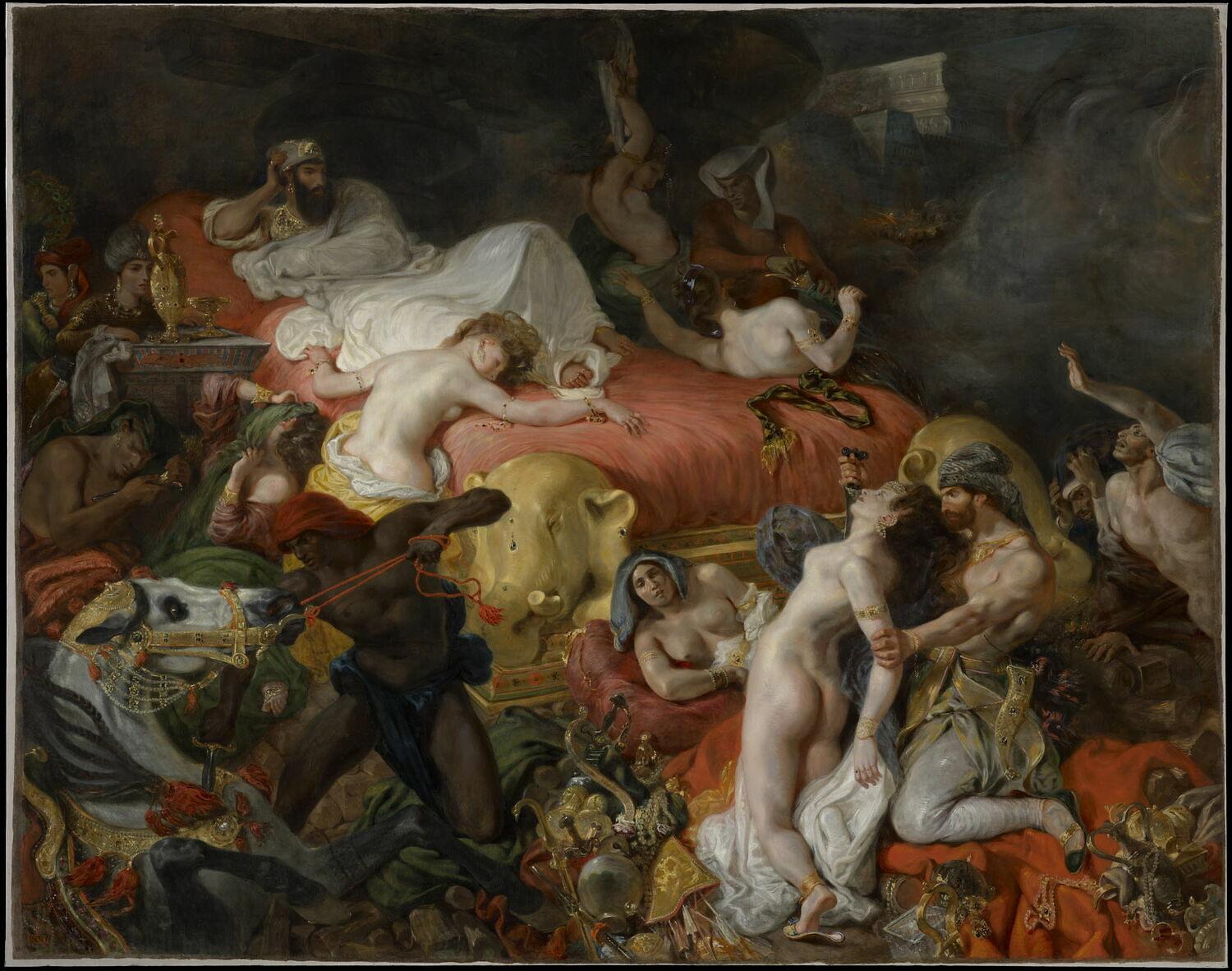The Death of Sardanapalus: Delacroix’s Romantic Inferno
Artist: Eugène Delacroix
Title: La Mort de Sardanapale
Year: 1827
Medium: Oil on canvas
Movement: French Romanticism

Introduction
Painted during the height of French Romanticism, Delacroix’s The Death of Sardanapalus presents a feverish vision of decadence, despair, and absolute power undone. Based on a poetic drama by Lord Byron, the painting depicts the final moments of the Assyrian king Sardanapalus, who, facing defeat, commands the destruction of his riches, concubines, and animals—preferring annihilation to surrender.
Composition: Organized Chaos
The canvas is a visual tempest. The scene swirls around a diagonal composition that defies classical balance. At its top, the indifferent figure of Sardanapalus reclines on a crimson bed like a god, detached and impassive. Around him, naked women struggle, soldiers enforce his will, slaves are slain, and horses rear—everywhere, motion, violence, and sensuality intertwine.
Rather than heroic drama, Delacroix gives us **theater of excess**—a collapse of empire seen not through politics, but through emotion and spectacle.
Color, Light, and Sensation
Unlike the clean lines of Neoclassicism, Delacroix uses **vibrant, chaotic color**—a riot of reds, golds, and shadows. The red of the bed, the blood, the robes—it dominates, like a symbolic fire consuming the palace. The brushwork is loose and expressive, evoking violence not only in action but in the very way the image is painted.
Political and Cultural Echoes
Exhibited just three years before the **July Revolution of 1830**, the painting was a shocking indictment of power and its decadence. Many French critics were appalled by the lack of morality, the sexual violence, and the absence of noble heroism. In a time when **France was reeling from Napoleonic collapse**, conservative monarchy, and colonial expansion, Delacroix’s Sardanapalus is both **a tyrant and a victim**—a ruler who consumes his own kingdom rather than face defeat.
Some art historians read it as a **Byronic critique of empire**, mirroring Europe’s growing fascination with the East (Orientalism), but also its anxiety over its own imperial fragility.
Romanticism Unleashed
Delacroix's painting embodies Romantic ideals: emotion over reason, chaos over order, and the individual will pushed to its limit. Here, Sardanapalus does not fight nobly—he watches as his legacy is torn apart by his own decree. It’s a painting of absolute power that collapses under its own weight.
“The imagination is the only weapon in the war against reality.” – Lewis Carroll
Delacroix paints not the reality of a historical moment, but the imagination of a collapsing world—lush, cruel, and unforgettable.
Legacy and Shock
Critics were divided. To some, it was obscene. To others, it was genius. But all agreed: nothing like it had been seen before. Today, The Death of Sardanapalus is a towering achievement of 19th-century Romanticism—one that dares to show the grotesque underside of beauty and the eroticism of destruction.
Conclusion
Delacroix’s masterpiece remains a haunting allegory for the end of empires, the dangers of ego, and the seductive horror of unchecked power. It asks not just what a king would do when facing death—but what civilization itself might do when consumed by its own desire.
